|
|
![]() |
|
|
|
|
|
|
|
![]() |
![]() |
![]() |
![]() |
![]() |
![]() |
![]() |
![]() |
![]() |
![]() |
![]() |
![]() |
![]() |
![]() |
![]() |
![]() |
![]() |
![]() |
![]() |
![]()  |
|
|
|
|
|
|
|
|
|
| |
| © Laurie Block Spigel 2005 – 2012 |
|
This workshop combines the following subjects:
- Science (geology and physics): crystals and energy conductors are explained;
- Math: lengths of copper wire needed for each wand are determined, measured and cut;
- Geography: locations of the origins of various minerals are found on maps, as well as countries with differing versions of Cinderella;
- Literature (English): excerpts from folklore and fairytales with magic wands are read; comparative literature (comparing the literature of different countries) is introduced as versions of Cinderella are discussed;
- Art: illustrations from different versions of Cinderella are compared; students sketch original designs for their wands; students make their own personal wands;
-
Music: selections to add to the experience were played while students
each made a crystal wand.
I gathered some sumac branches for this workshop, since they have a soft core that is easily hollowed. Each student glued a clear quartz crystal inside the tip of a branch. While most students used copper wire (an excellent conductor of energy) to wrap their wands, one student chose natural hemp twine since she wanted no metal in her wand. For adornments, students used feathers, tumbled stones, seashells, small crystals of pyrite and other minerals, beads, and ribbon.
While we worked we listened to fairy music: Tchaikovsky's "Dance of the Sugarplum Fairy" (from The Nutcracker Suite), Mendelssohn's "March of the Fairies" (from A Midsummer Night's Dream), and The Harp of Brandiswhiere by Sylvia Woods (a Celtic fairy tale in music).
Here is Laurie's prototype wand and some photos of the finished wands by Alexandra, Genevieve, and Sydney.
Laurie's prototype wand
This is the prototype I made for the workshop. I used two gauges of copper wire and tacky glue to fasten natural feathers, a seashell, tumbled stone, azurite nodule, small pyrite and green beryl (emerald) crystals, and a clear quartz crystal for the tip, to a sumac branch. I added a loop of brightly colored plaid ribbon decorated with plastic beads so that the wand could be hung on the wall. The four elements of earth, air, fire, and water are symbolized by the wooden branch (earth), feathers (air), seashell (water) and pyrite and copper (colors of fire).
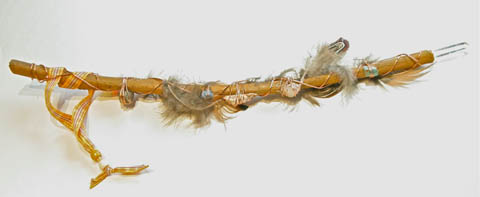
|
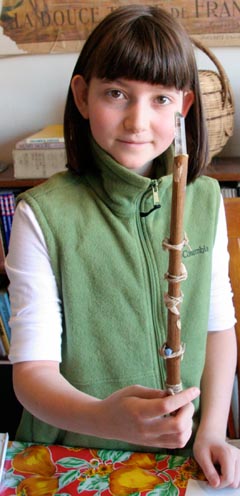 |
Alexandra
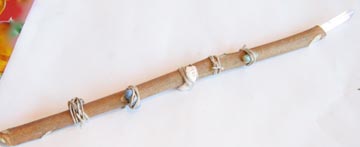 |
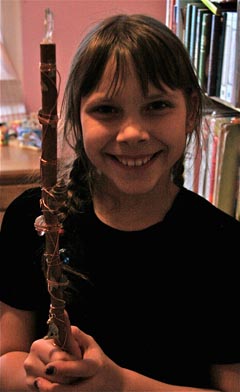 |
Genevieve
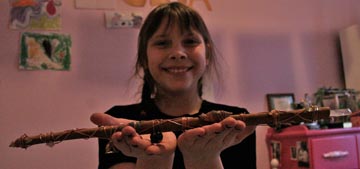 |
Sydney
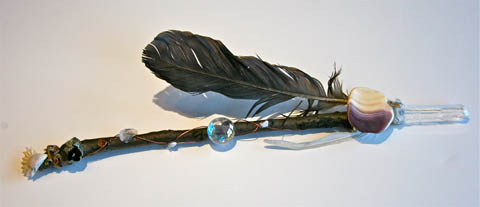 |
|

